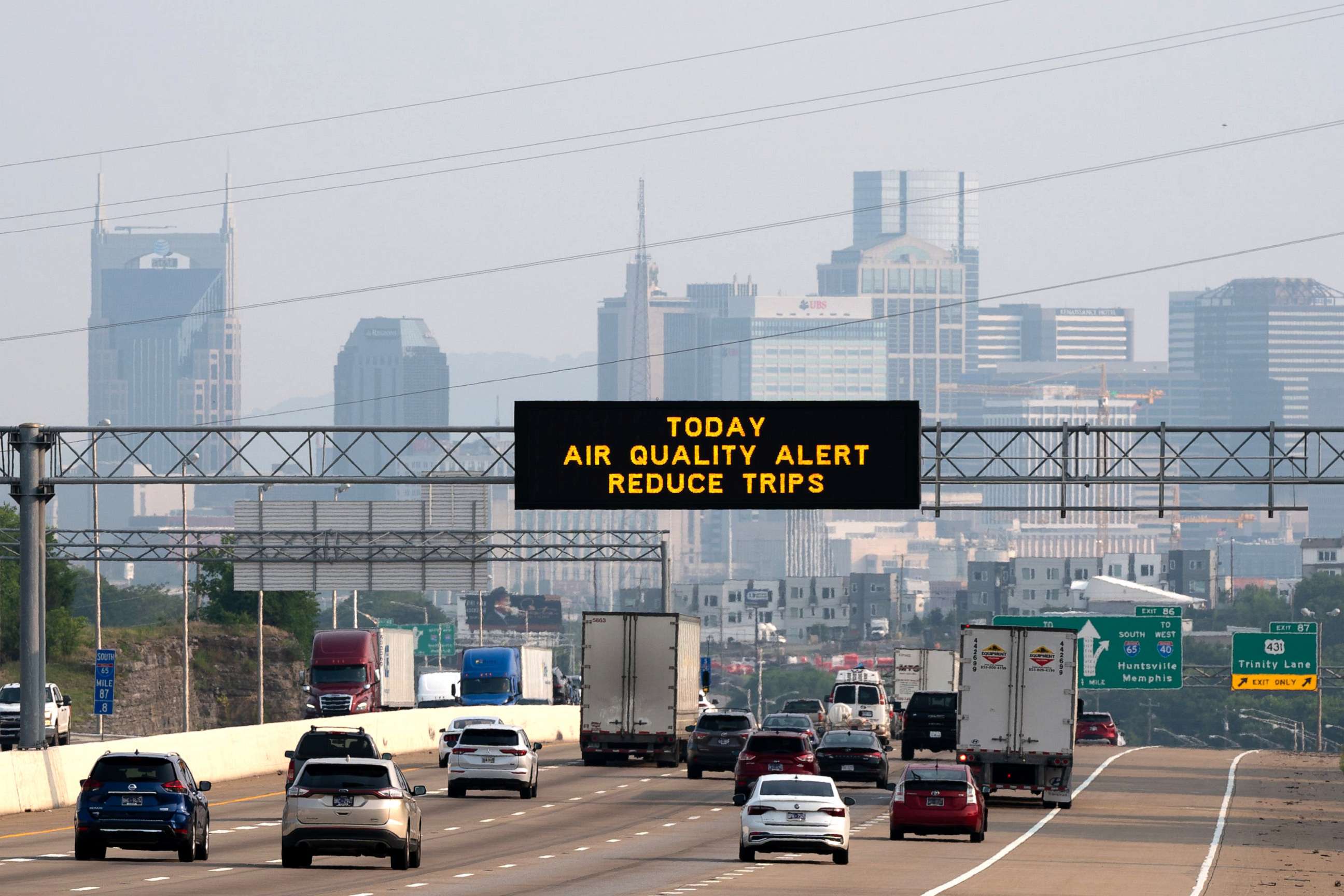Wildfire smoke map: These are the US cities, states with air quality being affected by Canadian fires
Smoke began traveling down to the U.S. on Sunday.
As Canada continues to battle its worst wildfire season on record, toxic smoke has traveled south and is once again blanketing states across the U.S.
A total of 18 states are under air quality alerts on Tuesday, stretching from Montana to New York and as far south as Georgia, according to AirNow, an air quality website run by a partnership between the federal government and state and local air quality agencies.
Washington, D.C., and New York City were among the top 10 worst air quality rankings in the world on Tuesday morning, according to IQAir, a website that publishes air quality data around the world.

While moderate surface smoke was still hanging over portions of the much of the East on Tuesday morning, it will lighten as the day goes on, forecasts show.
Light to moderate surface smoke will linger in some areas through the middle of the week.
There are more than 900 active fires in Canada now, with nearly 600 of them deemed "out of control" by the Canadian Interagency Forest Fire Centre.


The fires in 2023 have already have already burned more than 26 million acres in Canada -- more than 850% of normal and far surpassing the previous record set in 1995 of 17.5 million acres burned. There are still months to go in the fire season.
The Canadian wildfires began far earlier than usual and have been causing air quality concerns in the U.S. since May.
Vulnerable groups, such as children, teenagers, senior citizens, pregnant people and those with heart or lung disease, stay indoors and that people who travel outdoors consider wearing masks.
This is because wildfire smoke is made up of several toxins, including fine particulate matter -- known as PM2.5 -- which is 30 times smaller in diameter than a human hair.

These particles are too small to be seen with the naked eye and can be breathed deep into the body, entering the nose and throat and traveling to the lungs.
PM2.5 can cause short-term health effects, even for healthy people, including irritation of the eyes, nose and throat; coughing, sneezing; and shortness of breath. It can also cause long-term effects such as asthma and heart disease.

Canada may not be the only country in North America that has to battle wildfires. Red flag warnings went into effect Monday for much of eastern Washington and parts of Oregon and Colorado due to dry air, dry ground, and breezy conditions.

Combined with low humidity and strong winds, the conditions are prime for fires to be sparked and to grow rather quickly.
ABC News' Kenton Gewecke contributed to this report.




